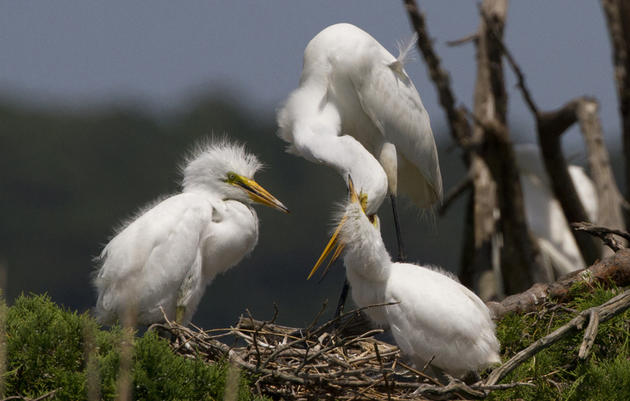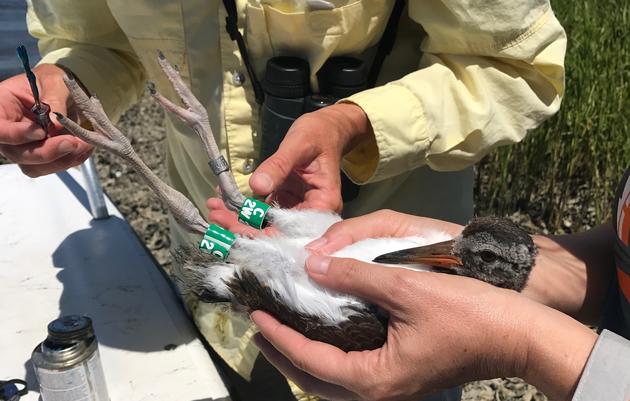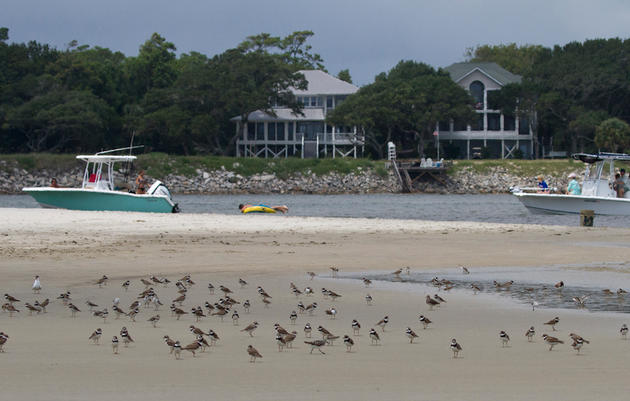This post is brought to you by Allison Weide and Emma York, two graduate students in the Department of Environmental Sciences at UNC Wilmington.
Located in the mouth of the Cape Fear River 30 miles south of Wilmington, Battery Island is home to thousands of pairs of nesting waterbirds every summer, including White Ibis and several egret and heron species.
Many of these birds are tree-nesters, choosing to build their nests in the red cedar, mulberry, and yaupon that grows on the southern half of the island. This coastal shrub thicket has provided a stable nesting area for these birds for decades!
Recently, however, there’s been some cause for concern: In certain areas along the shoreline in front of the nesting colony, erosion is causing vegetation to die back. This past spring, we began working on Battery Island to assess the extent of this shoreline change and perform a vegetation survey in the nesting area to determine what the birds choose to nest in.
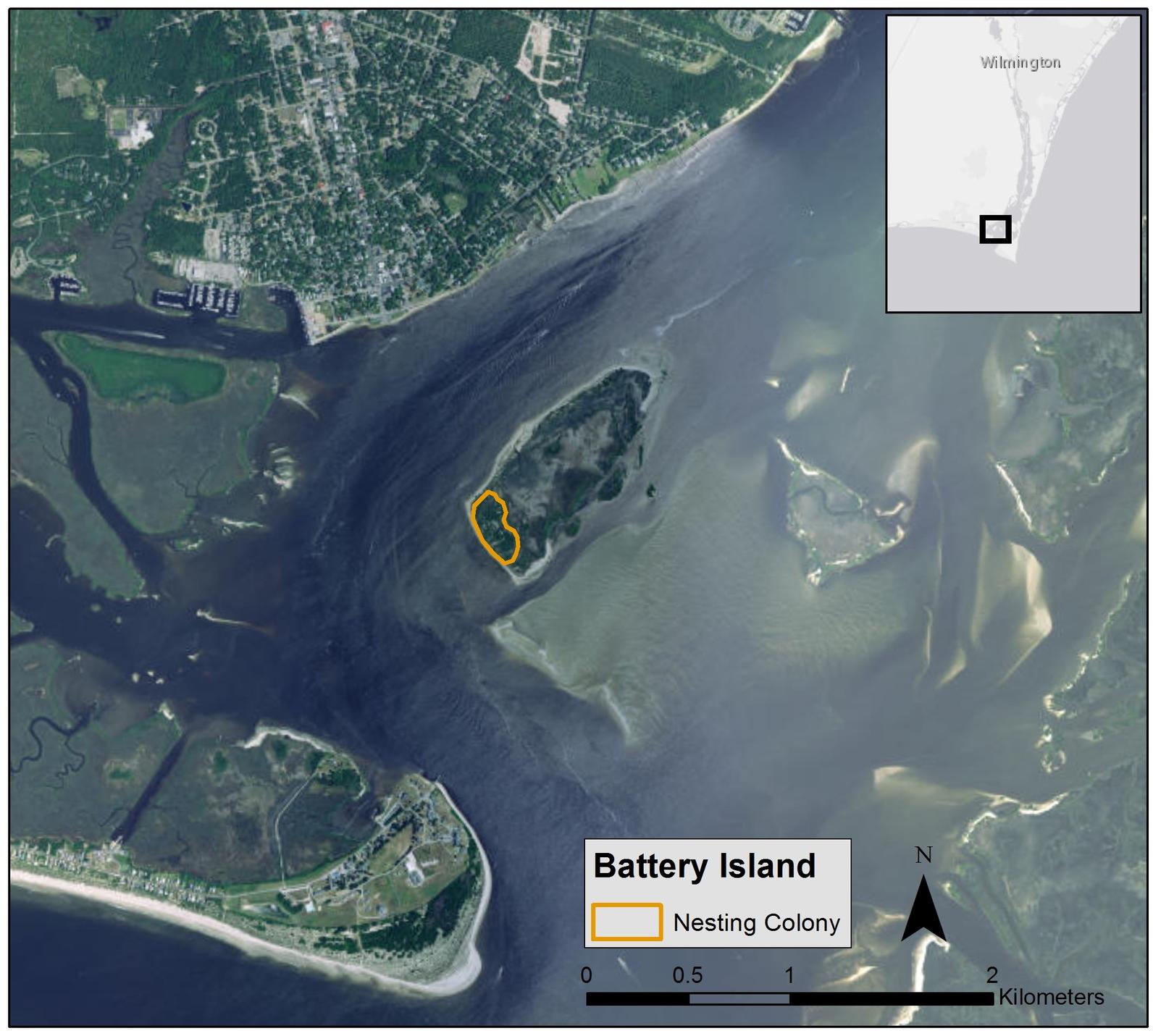
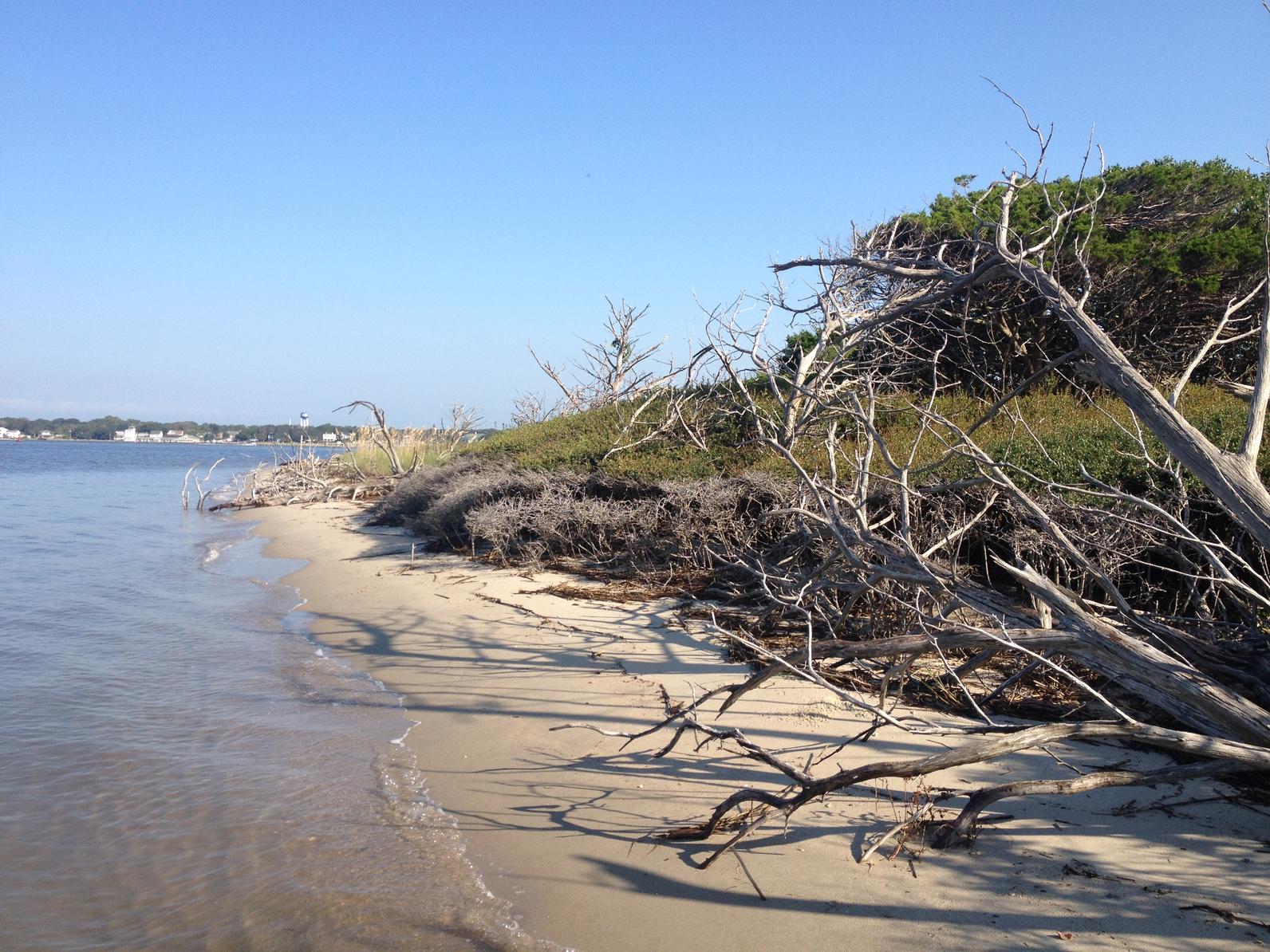
Our research involved several days of fieldwork on Battery Island. To determine the amount of shoreline change that’s happened over the past 50 years, we took GPS points along the shoreline and compared that data with the shoreline on several historic photos. The vegetation survey required getting down and dirty as we crawled and climbed through shrubs and trees to record what was growing along transects that ran across the nesting area. After the nesting season ended, we also recorded the number of nests along each transect, as well as what kind of tree the nest was in.
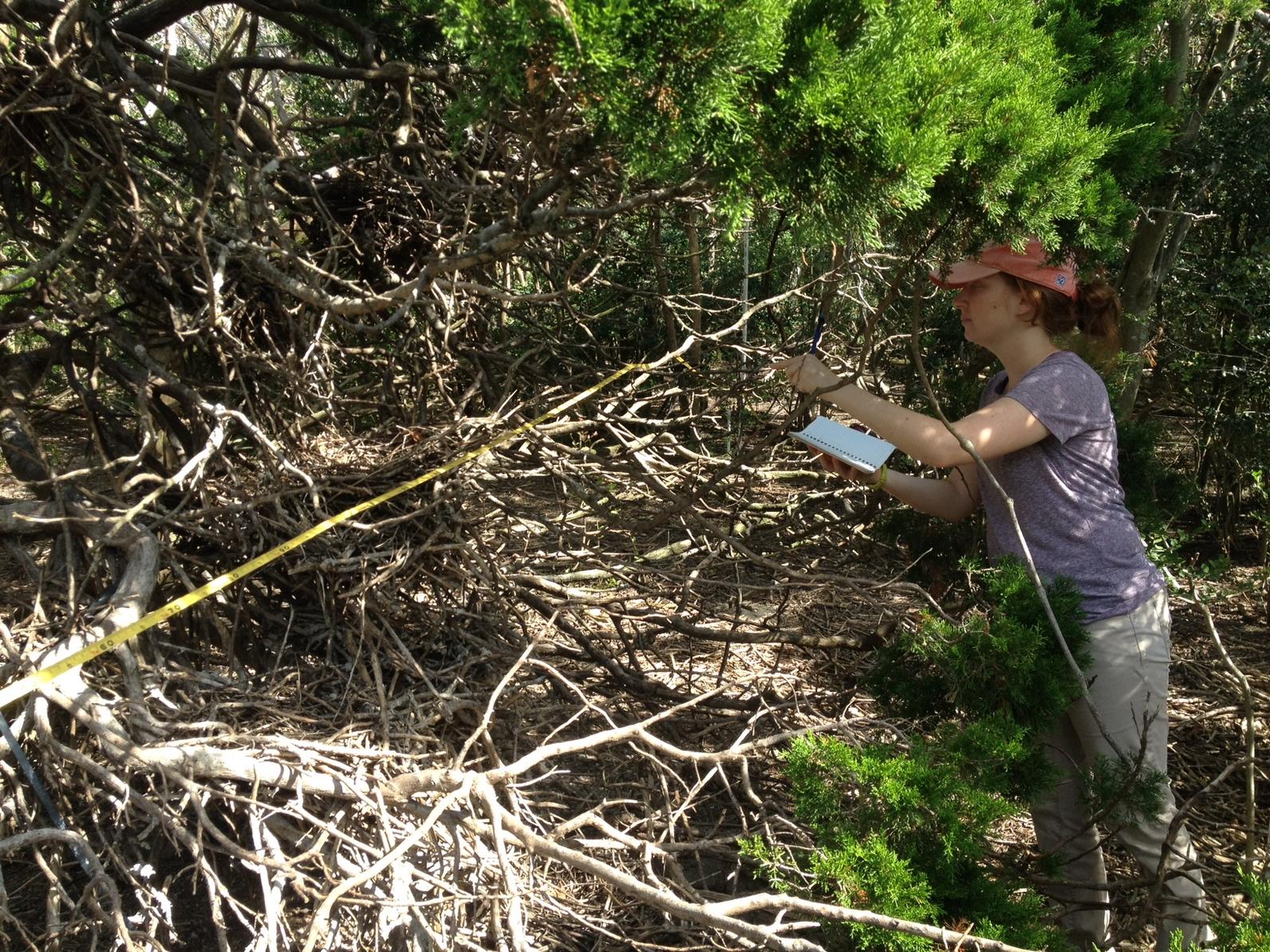
We found that there has been a substantial amount of erosion along Battery Island’s shoreline since 1961. This erosion, caused by the wakes of passing vessels in the busy river channel, leads to vegetation die-off because of increased salt exposure. If this erosion continues at the current rate, there will potentially be a smaller nesting area for ibis and other tree-nesting birds.
Additionally, in our vegetation survey we found an abundance of mulberry (present in two-thirds of the plots that we surveyed) and a lack of recruitment of red cedar. As a shade-intolerant species, cedar is potentially losing ground to the prolific, rapidly-growing mulberry. If birds prefer to nest in red cedar over other tree species, then the lack of cedar recruitment could be an issue for future nesting success as the older cedars die off and fail to be replaced. We’re still working on nest counts to determine what trees are being used the most for nesting!
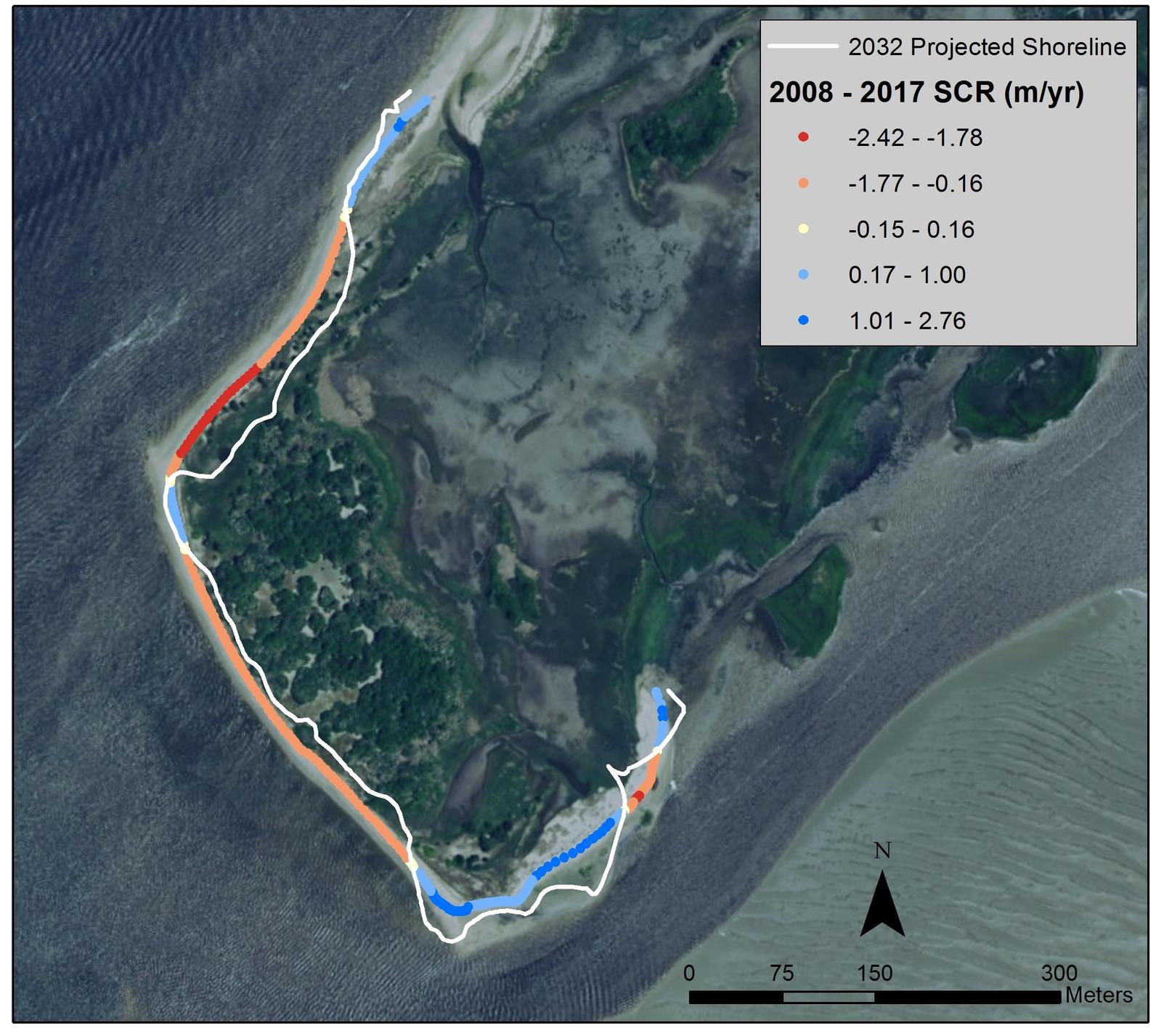
Battery Island is an important nesting site because of its isolation and distance from human disturbance. A decrease in the size of the nesting area could spell disaster for bird species that do not have many other options for nesting in the Cape Fear region. Keeping trees in the nesting area alive is crucial for the ongoing success of these waterbirds!


